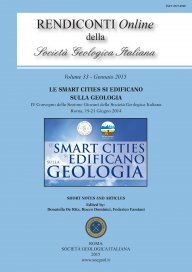
Geomorphological evolution of the middle-lower reach of the Tronto river (central Italy), during the last 200 years: impacts on flood hazard
Marco Giacopetti (*), Marco Materazzi (*), Gilberto Pambianchi (*), Domenico Aringoli (*) & Piero Farabollini (*)
(*) School of Science and Technology, Geology Section, University of Camerino, Via Gentile III Da Varano, 62032 Camerino (MC), Italy.
DOI: https://doi.org/10.3301/ROL.2015.12
Volume: 33/2015
Pages: 48-52
Abstract
The geomorphological dynamics is an important indicator for understanding processes of river erosion and sediment transport useful to plan appropriate remedial works along the rivers, so as not to modify the fragile equilibrium of the river itself. The present study aims at improve the knowledge on the geomorphological evolution of the Tronto river between the river's mouth and the town of Ascoli Piceno through the analysis of historical maps and aerial photos covering different time spans.
The retrieval of historical maps has allowed the reconstruction of the geomorphological evolution of the river bed and of the intervention aimed at river banks protection or, sometimes, for agricultural and industrial use.
The interventions along the river beds began around the early 1900s (following the disastrous events of 1897 and 1898), resulting in a strong reduction of the floodplain width, from about 330 up to 210 meters and a rectification of the same with the construction of embankments up to 6 meters above the thalweg; these interventions were more intense at the mouth. The mismanagement of the terminal reach, among other things, after the interventions started in 1978 with the overall reduction in the flow section of the river, will favor the expansion of the flow during the 1992 flood event. The analysis, carried out in a GIS environment, evidenced as the interventions made along the river, have progressively modified almost all of the river reach for a length of over 20 km, reducing the typical cross section of about 50%.
Keywords
Get Full Text